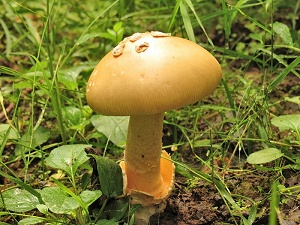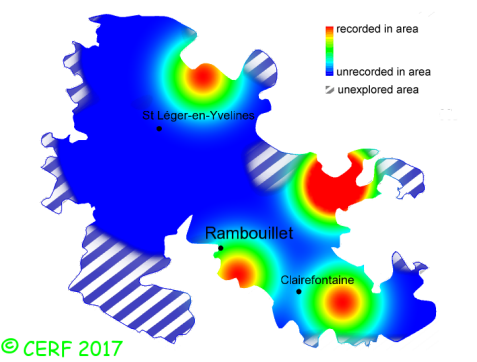| Amanita crocea (Quél.) Singer |
|
|
|
|
|
|
The cap is saffron-yellow to orange-ochre, with a central umbo; its margin is striate. The cap surface is smooth. The stem is washed with red, hollow, with a white sheathing volva, without ring. The flesh is unchanging; its taste is nutty; the odour is mild; its texture is fibrous. The gills are cream, free, crowded . The spore print is white. This species is mycorrhizal. It grows on the ground, in broad-leaved woods, on a rather acid soil, with birch, oak, chestnut. The fruiting period takes place from July to November.
Chemical tests : none. Distinctive features : Saffron to orange-yellow cap; edge of gills slightly flaky; stem covered with silky tufts, orange-yellow on a white background; white volva on the outer surface, of the colour of the cap on the inner surface Amanita crocea is quite rare and localised in the forest of Rambouillet, and is quite rare, more generally speaking . | ||
|
page updated on 14/01/18

